A standard crib mattress size measures 27 1/4 inches wide by 51 5/8 inches long, with a thickness not exceeding 6 inches, based on U.S. Consumer Product Safety Commission guidelines.
There are so many details to consider when preparing to welcome your bundle of joy into the world. When juggling decisions ranging from breastfeeding or bottle feeding to what color nursery you want, one detail that often gets overlooked is choosing the right crib mattress size.
Believe it or not, not all cribs are created equal. Understanding the dimensions that suit your crib type is key to ensuring your baby sleeps soundly and safely. In this guide, we’ll dive into the world of crib mattresses and explore how selecting the perfect size can make all the difference for you and your baby getting a good night’s rest.
Crib Mattress Size Chart
When it comes to crib mattresses, size truly matters. It’s so important that it can even save your child’s life.
| Type of crib mattress | Width | Length | Ideal for |
| Standard | 27 1/4 inches | 51 5/8 inches | Most nursery spaces |
| Mini | 23 3/8 inches | 37 3/8 inches | Smaller homes, apartments, and nurseries |
| Shaped | Sizes vary | Sizes vary | Adding unique style to a nursery |
| Bassinet | Sizes vary | Sizes vary | Parents who want to sleep next to baby or travel often |
| Note: All sizes are approximate. Check manufacturer guidelines and measure your crib and mattress to guarantee a good fit. | |||
The most prevalent crib mattress size is the standard crib mattress, measuring 27 1/4 inches in width and 51 5/8 inches in length. This size is what you’ll find in most full-size cribs. Be aware that these standard guidelines can vary by plus or minus 5/8 inch.
Measuring from one seam to the other, crib mattresses should not be more than 6 inches tall. This standard decreases the chance of a baby climbing out of their crib as they get bigger.
If you’re considering a less traditional crib option, they often come with unique mattress sizes and can vary greatly. We’ll describe some common crib types below.
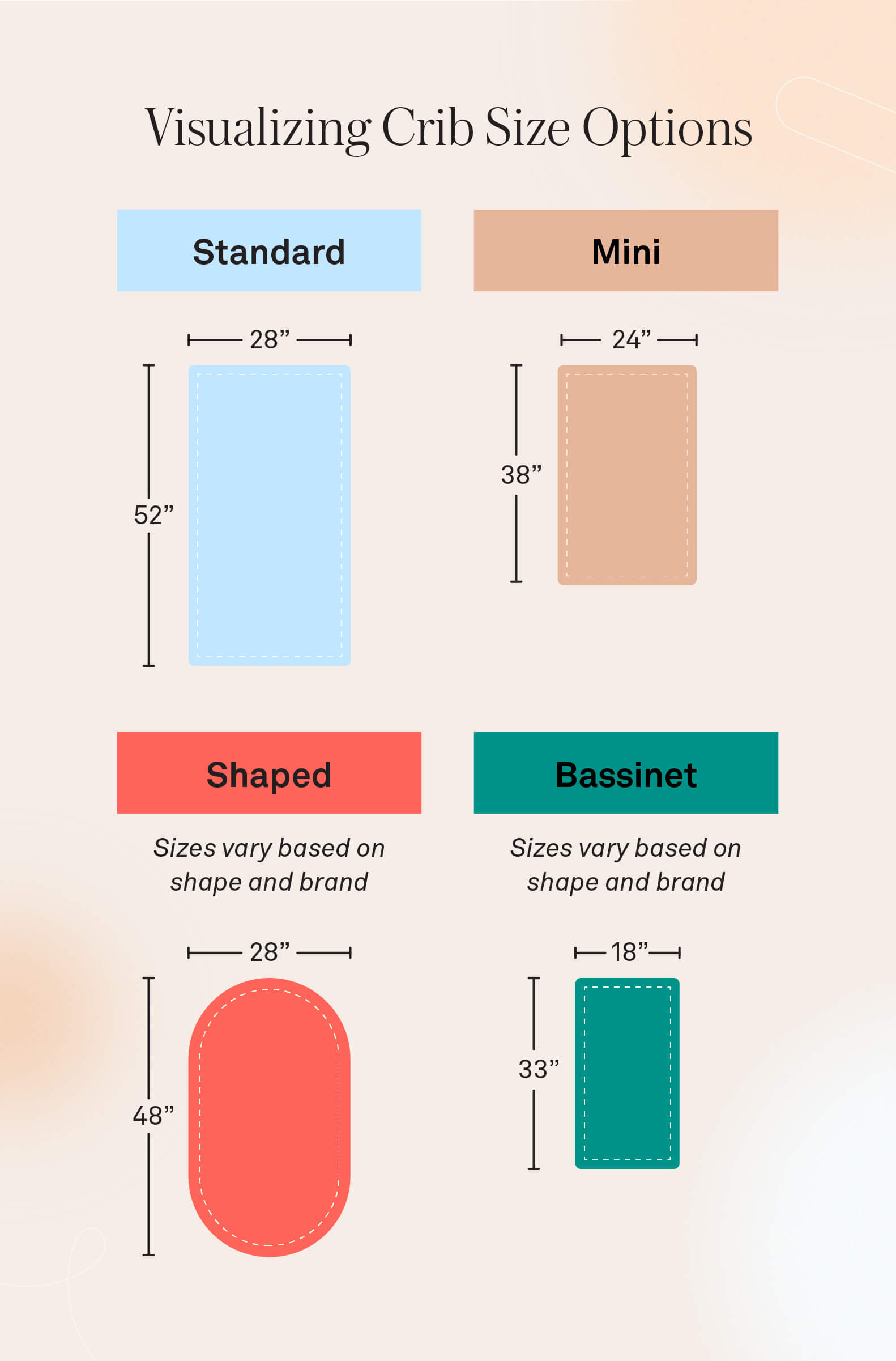
Why fit matters
A properly fitting mattress ensures there are no dangerous gaps between the mattress and the crib’s sides. This tight fit is a preventative measure for potential entrapment and suffocation hazards for your baby.
Helpful Tip
There should be space for no more than two fingers between the side of your crib mattress and the crib’s frame.
How to manually calculate your crib mattress dimensions
Thankfully, figuring out the crib mattress dimensions you need is a pretty straightforward process. Here are five simple steps to guide you:
- Measure the inside of the crib: Begin by measuring the interior dimensions of your crib. Use a tape measure to determine the width and length.
- Allow for a snug fit: Subtract about 1/4 to 1/2 inch from both the width and length measurements. This small gap helps prevent any mattress edges from folding, which could be a safety hazard.
- Check for standard sizes: Since most full-size cribs adhere to a standard size of 28 inches in width and 52 in length, double-check that your measurements align with these dimensions.
- Consider crib type: If you have a non-standard-sized crib, check the manufacturer’s guidelines for mattress size recommendations. These cribs may require specific mattress sizes instead of standard sizes.
- Safety above all: Remember that safety is the top priority. Make sure that the mattress fits snugly with no gaps that could dangerously trap your baby.
5 Common Types of Cribs
Did you know that there are at least five common types of cribs, each with unique characteristics? From standard cribs to convertible cribs and mini cribs, these crib variations may require different mattress sizes to fit snugly.
Standard cribs
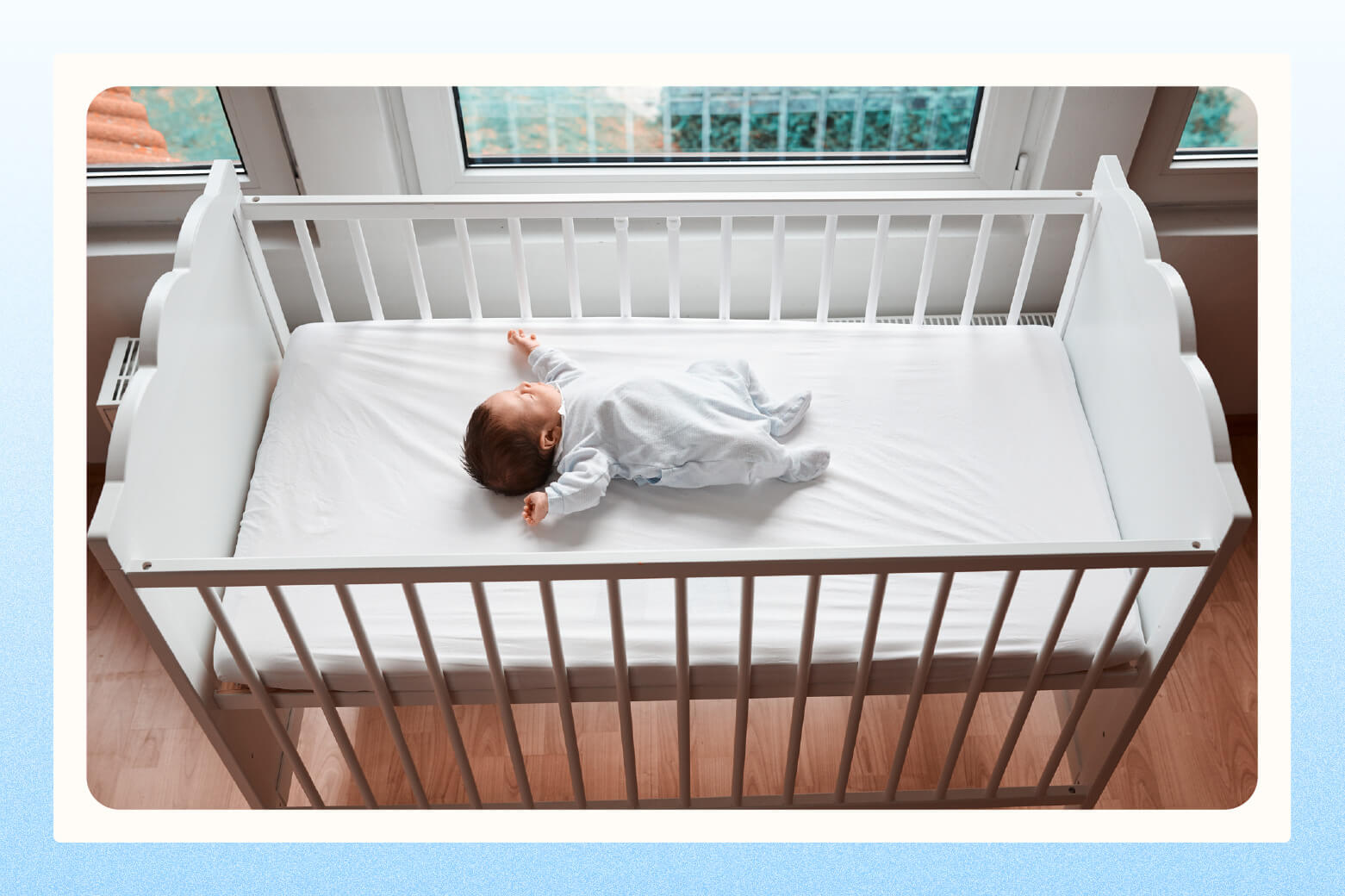
- Standard crib size: 28” wide x 52” long
- Best for: Most nursery spaces
A standard crib, sometimes referred to as a full-size crib, is the traditional choice for most parents, designed with specific measurements to ensure your baby’s safety and comfort. These cribs work great for most nursery setups and fit most standard crib mattresses like a glove. Standard cribs are a top choice for families seeking long-term value, as they can often convert into toddler beds or daybeds, accommodating your child’s growth over the years.
Mini cribs
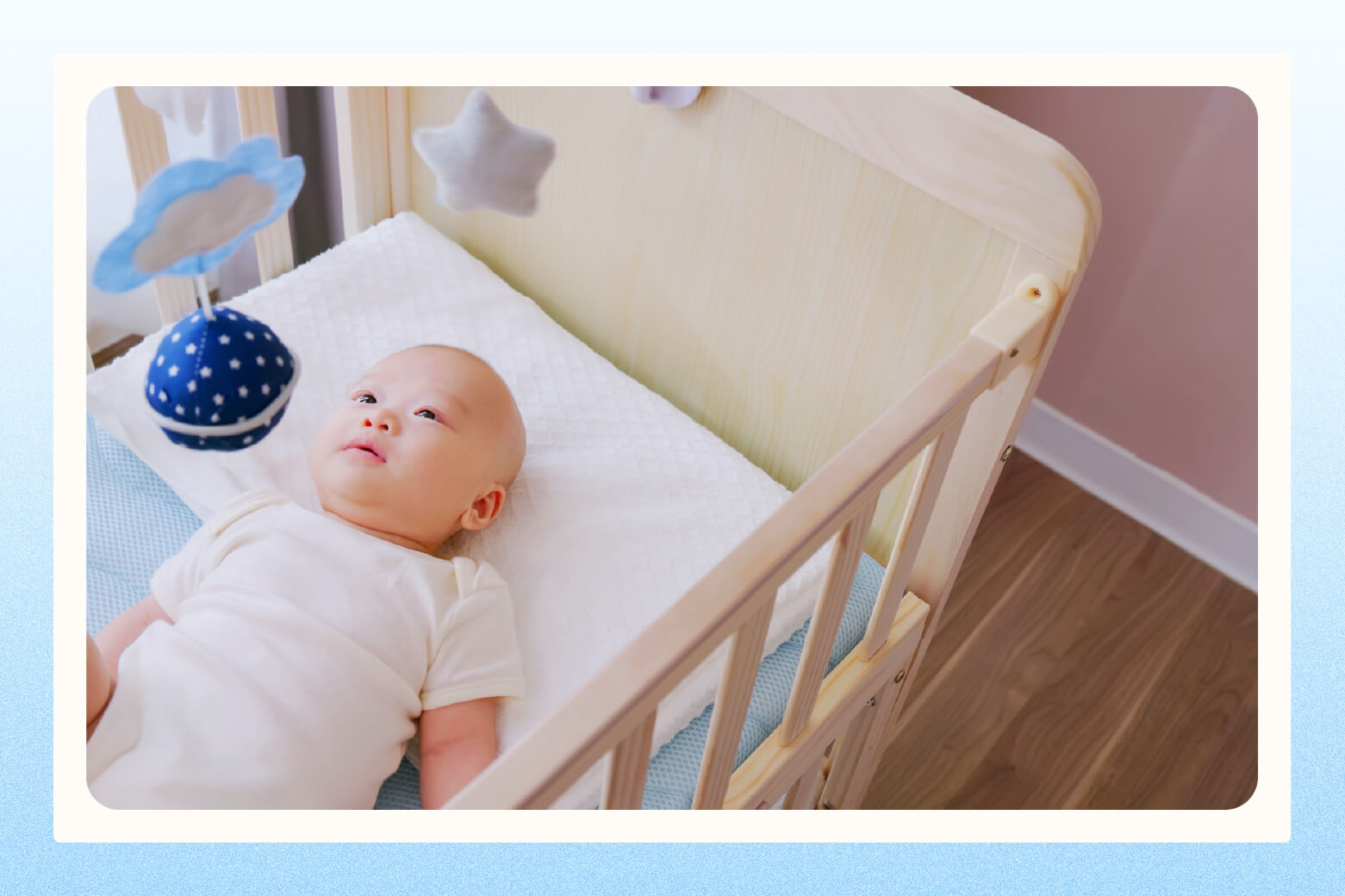
- Mini crib size: 24” wide x 38” long
- Best for: Smaller homes, apartments, and nurseries
A mini crib is a smaller and more compact version of a standard crib. It’s a great way to save room in a small nursery. Mini cribs usually have interior dimensions of around 24 inches in width and 38 inches in length.
These cribs can be a good option, depending on your situation. For instance, a mini crib can be the perfect fit if you’re setting up a nursery in a smaller bedroom or sharing space with your baby. They are also great for grandparents’ houses or families who frequently travel since they’re easier to transport and fit through doorways.
Shaped cribs
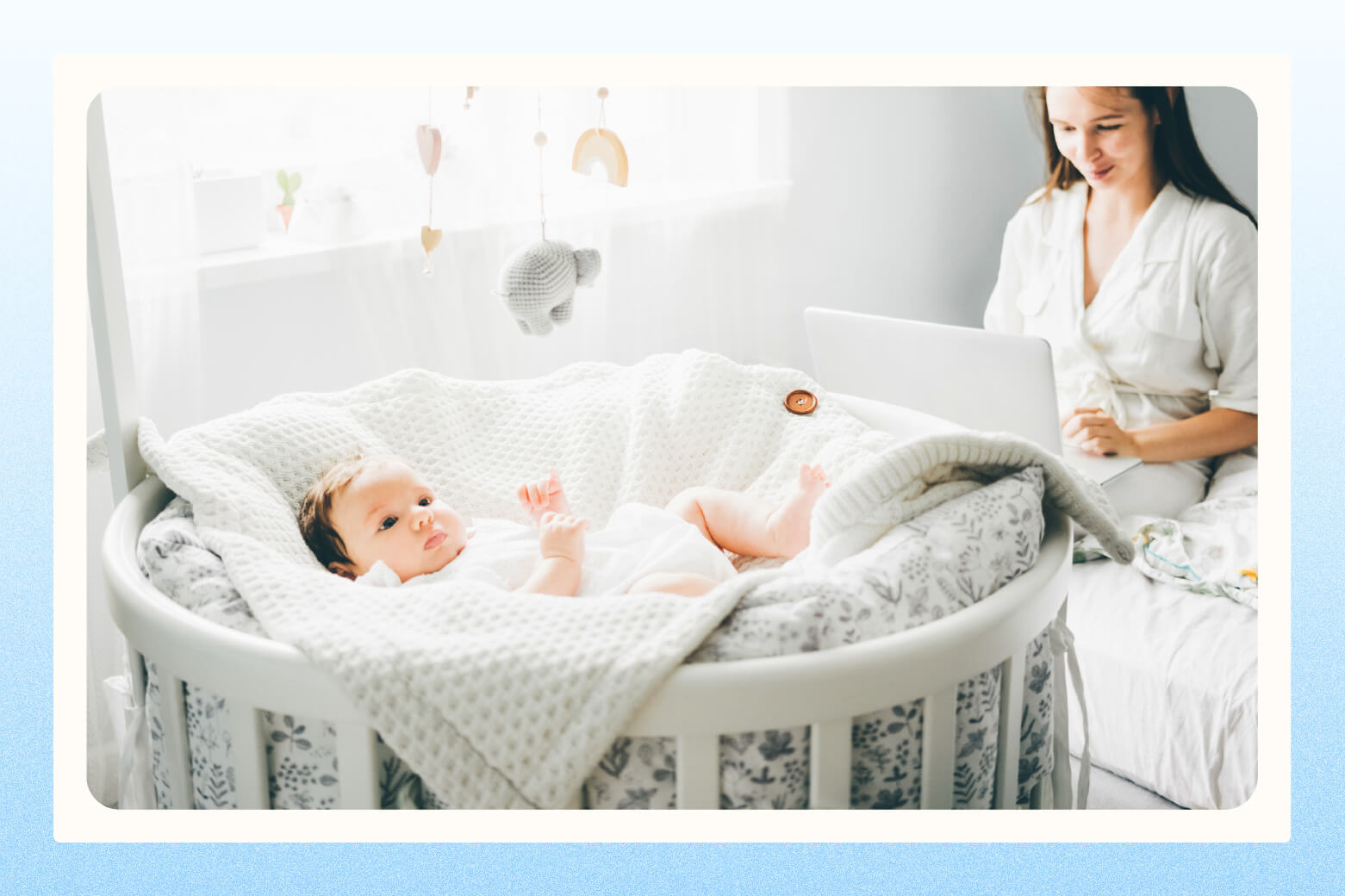
- Oval-shaped crib size: 28” wide x 48” long (size depends on shape and brand)
- Best for: Adding unique style to a nursery
Shaped cribs, also known as novelty cribs, can come in unique shapes and whimsical designs. Some may be as simple as an oval shape, but you can also find cribs shaped like animals, boats, or even fantasy castles. Most uniquely shaped cribs will come with a mattress tailored to fit the crib’s exact measurements and shape. While these cribs can add an extra layer of personality to your baby’s space, it’s important to ensure they still meet safety standards, just like traditional cribs.
Bassinets
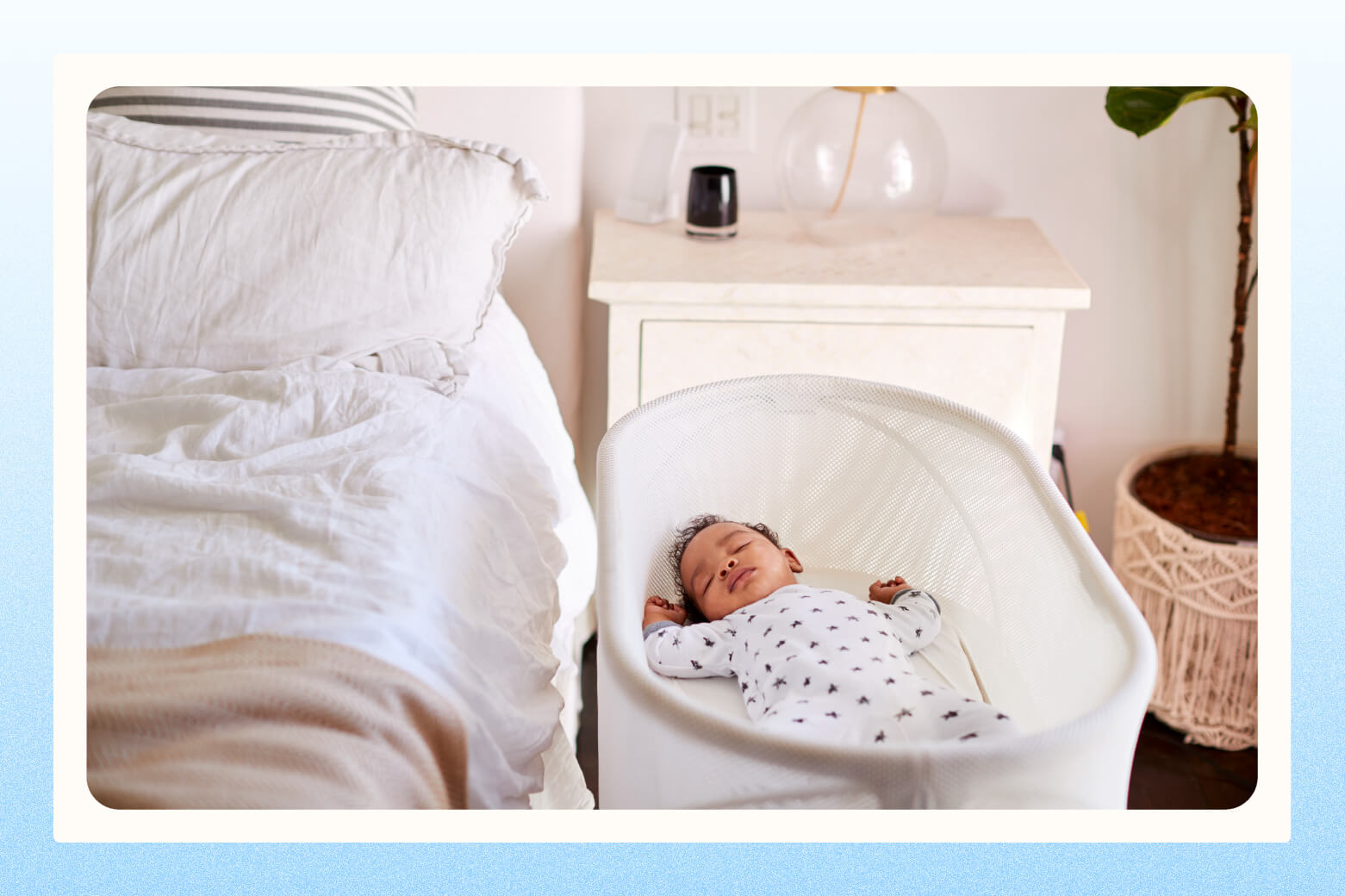
- Rectangle bassinet size: 18” wide x 33” long (size depends on shape and brand)
- Best for: Parents who want to sleep next to baby or travel often
A bassinet is a small portable bed for an infant, often positioned right next to a parent’s bed. They offer the flexibility to keep your newborn close by, making nighttime feedings and soothing easier. Another bonus feature of a bassinet is that a mattress is usually included.
Bassinets are often smaller than standard cribs, making them ideal for smaller nurseries or parents who want their baby right next to their bed during those early months. They are also popular with families who travel frequently with their baby, as they’re more compact and easier to transport than a standard crib.
Convertible cribs
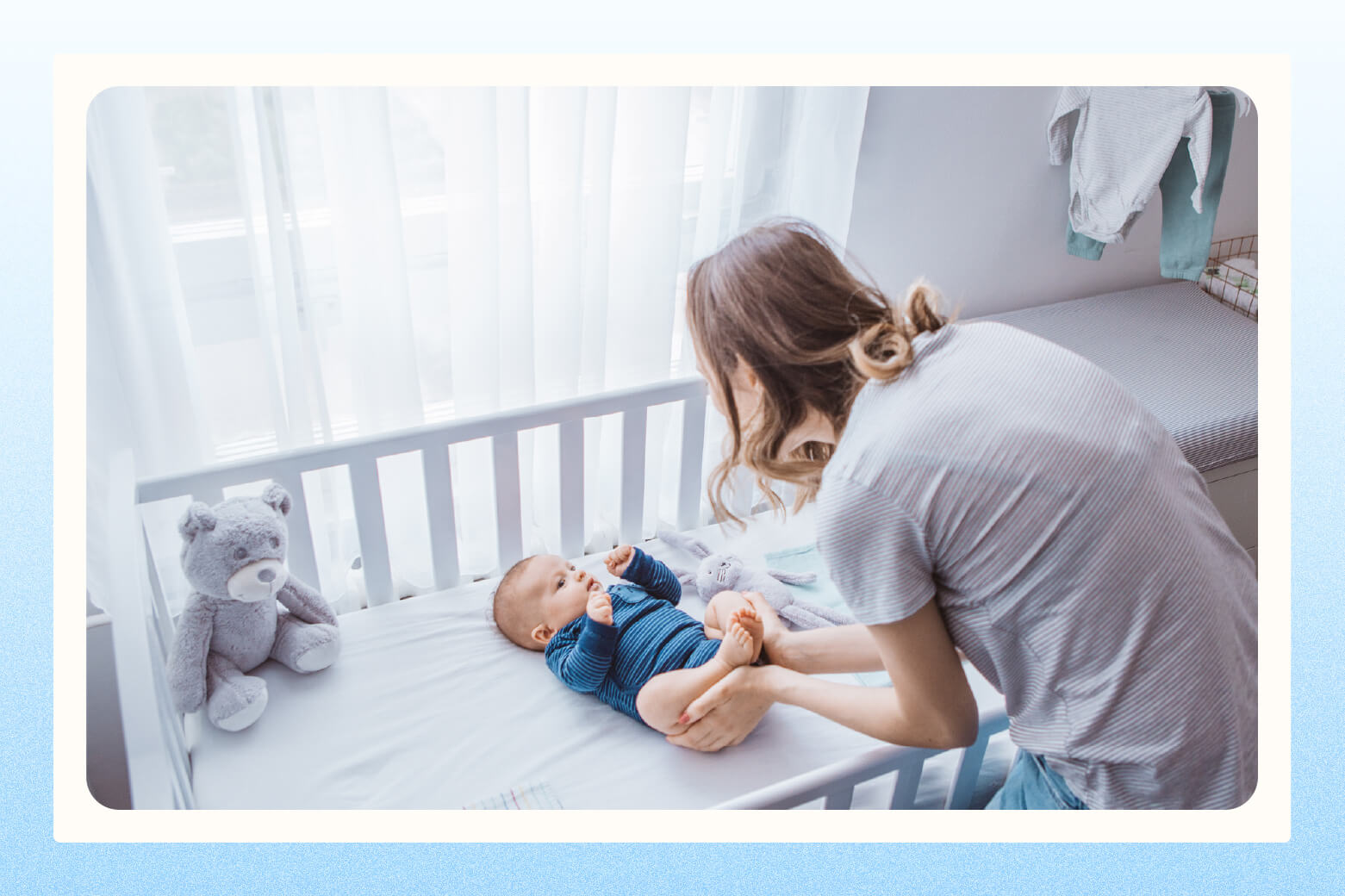
- Standard crib size: 28” wide x 52” long (same size as standard cribs)
- Best for: Families wanting to save time and money purchasing a toddler bed
Convertible cribs are designed with multiple possible configurations, typically transitioning from a crib to a toddler bed, daybed, and sometimes even a full-size bed. They typically use a standard-size crib mattress. And they can serve as a long-term investment in your child’s sleep — their adaptability can save you both time and money since you won’t need to purchase a separate toddler bed.
How to Choose the Right Crib Mattress
Selecting the perfect crib mattress requires you to pay attention to five essential factors that will help ensure a safe and comfortable sleeping environment for your baby.
- Safety: Start by checking for certifications like the GREENGUARD Gold or Oeko-Tex labels, which indicate that the mattress has been tested for harmful emissions and chemicals. Rest assured that the U.S. government has set flammability testing standards that all crib mattresses must meet.
- Firmness: Opt for a firm crib mattress to reduce the risk of suffocation and provide the necessary support for an infant’s developing body.
- Size: Measure your crib’s interior carefully to determine the right mattress size. As we’ve mentioned, standard crib mattresses typically measure 28 by 52 inches, but cribs can vary. Make sure the mattress fits snugly with no gaps to prevent entrapment hazards.
- Materials: Consider the materials used in the mattress, such as foam or innerspring. Both options have advantages, so choose one that works best with your preferences and budget.
- Durability: Look for a crib mattress that can withstand wear and tear. Quality materials and construction will increase the likelihood that the mattress will last throughout your baby’s crib years.
Choosing the right crib mattress size is a small but important decision that will contribute to your baby’s overall comfort and safety. By considering factors like firmness, materials, and safety certifications, you can give yourself some peace of mind while creating a cozy and secure sleeping environment for your little one.
Crib Mattress Frequently Asked Questions
How high should a crib mattress be in the crib for a newborn?
The ideal height position for a newborn’s crib mattress is generally at its highest setting, typically around 10 to 12 inches from the top of the mattress to the crib’s railing. This allows for easy access for parents and caregivers when placing or picking up your baby. As your baby grows and becomes more active, you can gradually lower the mattress to prevent them from climbing out when they reach that adventurous stage. Always refer to your crib manufacturer’s guidelines for specific height recommendations to ensure a safe night’s sleep for your newborn.
Can I register for a crib mattress?
You can absolutely register for a crib mattress! Use this handy baby registry checklist and consider the size and type of crib you have to ensure you select a mattress that will fit properly.
Are all crib mattresses the same size?
While there are standard crib mattress dimensions, some variations exist, especially with different types of cribs. It’s important to measure the crib’s interior dimensions or check the manufacturer’s recommendations to confirm the specific crib mattress size you need.
Is a crib mattress the same size as a toddler mattress?
Toddler mattresses are slightly larger than crib mattresses and are designed to accommodate a growing child who has transitioned from the crib to a toddler bed.
